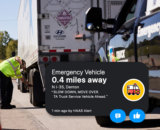Get ready to know your truckstop’s traffic… If you thought I was talking about truck and 4-wheel traffic, I apologize, but I pulled a bit of a bait-and-switch because I do want you to get to know about them, but not in the way you’re likely expecting.
You need to start understanding your online traffic to understand your customer better and how to reach them. I was working with a member who wanted to use his website to reach more truck drivers. That sounded great, but there was a problem: when I looked at his website’s analytics (performance metrics), I found that his online customer is most likely not a truck driver.
I’m sure you’re asking how would I know that. That’s the beauty of data: it tells a story. Here are the items that gave it away:
- Search referrals
- Browser traffic
Don’t worry I’m going to explain. Search referrals are the keywords that someone searched for that brought them to the website, so in the case of this member, the vast majority of people (> 60 percent) who visited his website searched for “gas station [location’s town name].” Truck drivers do not need to find gas stations. “Truck stop [location’s town name]” was the third most popular search term, but it accounted for less than 15 percent of all traffic. For those of you who were wondering, “food [location’s town name]” was the second most popular with less than 30 percent of traffic.
While that should be enough to convince you, I wanted to share browser traffic because this gives you a pretty good idea of the shopping profile of your potential customer. What do I mean? iPhone users are shoppers: they peruse looking for things they may want to purchase often without an agenda. Android users are buyers: they know exactly what they want and try to limit their purchases to those items they identified that they needed before walking through the door. How do I know this? iPhone users are more affluent and more likely to spend money than an Android user. It’s hard to believe, but you can ask my colleague Darren who immediately fact-checked me and eventually came around after seeing the overwhelming number of studies and then reflected onfamily and friends.
Now back to our member case study… Using the knowledge that 70 percent of truck drivers are Android users and the fact that this member’s mobile browser traffic appeared to be split fairly equally between iOS (iPhones, iPads, etc.) and Android, it supported our previous finding that it was unlikely that the majority of his customers were truck drivers since it deviated enough from the national trend. Also, we deduced that his online traffic was likely “comfortable” providing him the opportunity to sell more premium items at his location.
Ask your website provider to set up Google Analytics and provide you with regular reports. If you don’t know what you’re looking at it, don’t hesitate to reach out to me and I’ll do my best to help you navigate your digital traffic.
Subscribe to Updates
NATSO provides a breadth of information created to strengthen travel plazas’ ability to meet the needs of the travelling public in an age of disruption. This includes knowledge filled blog posts, articles and publications. If you would like to receive a digest of blog post and articles directly in your inbox, please provide your name, email and the frequency of the updates you want to receive the email digest.



